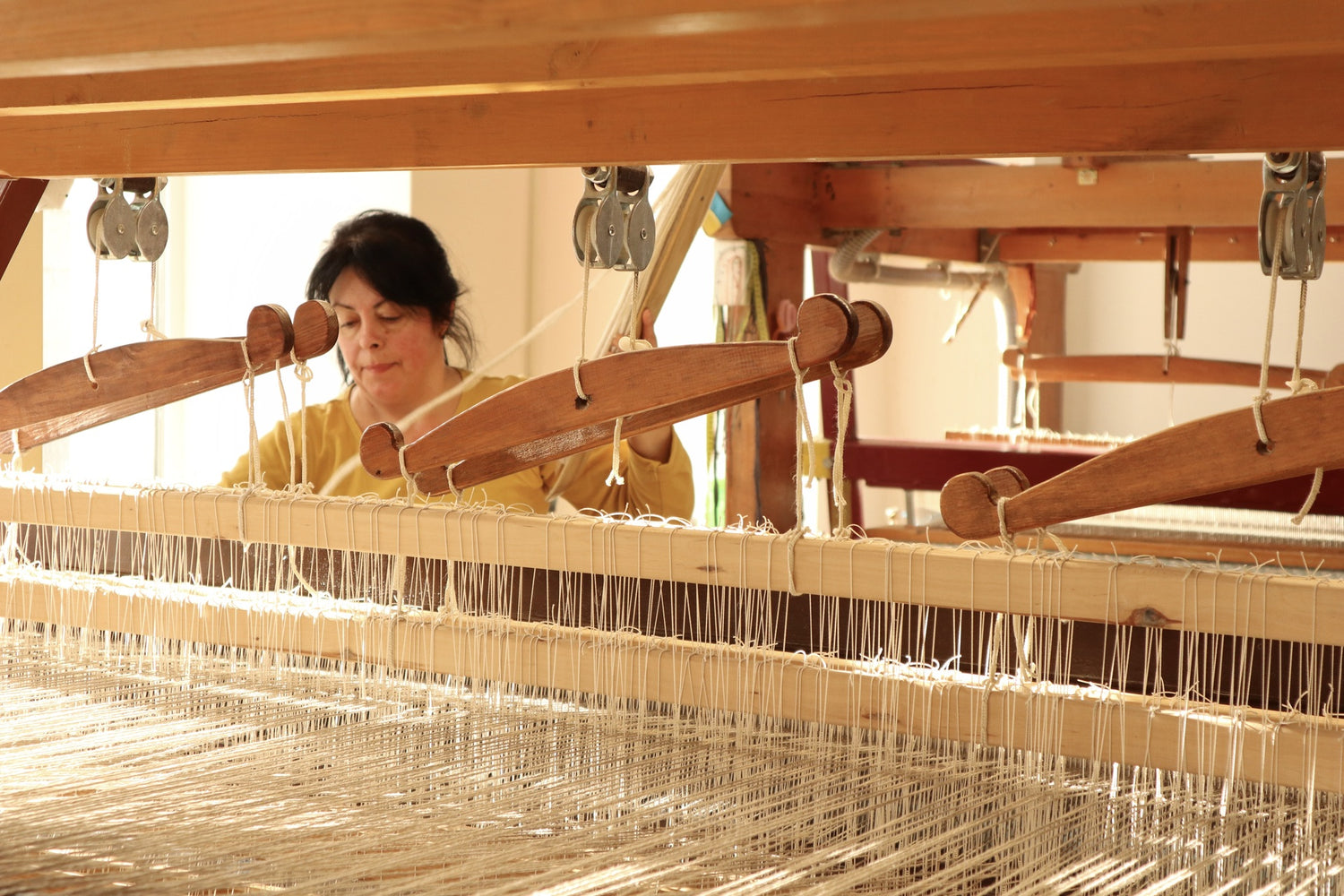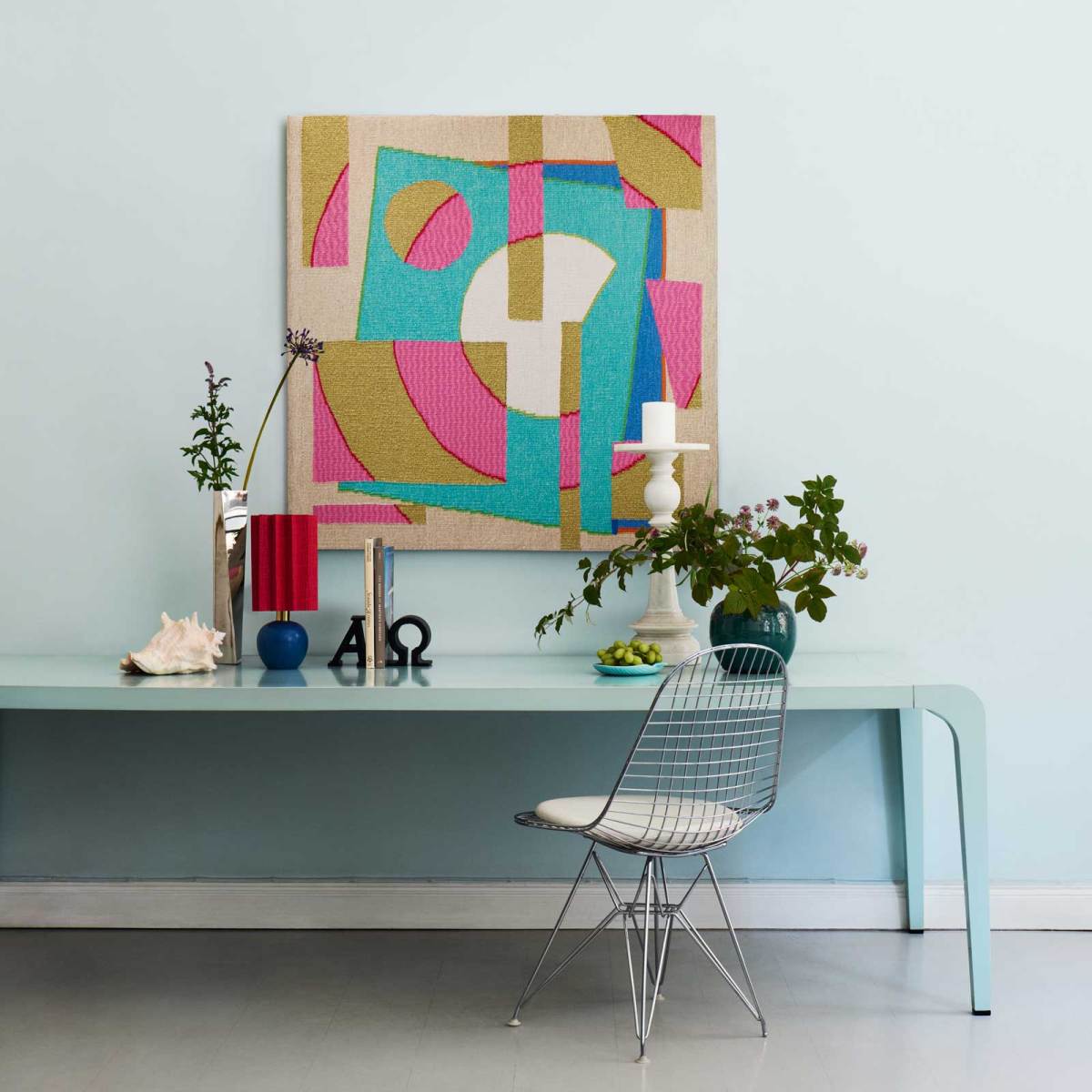Craftsmanship
Each Vandra Rug is a testament to craftsmanship, blending centuries of traditions with artistry to create handwoven rugs that embody both heritage and quality
Traditional rag rugs are an interior design detail that has been a part of Swedish homes since the end of the 1700s. Initially, textiles were rare and expensive, so rugs were reserved for festive occasions and displayed on walls. It wasn’t until the 1900s that they became a staple in everyday homes, placed on floors as both a functional and decorative element. We continue this rich tradition, crafting each rug entirely by hand.
"The Vandra Rug is more than a piece of decor—it’s a story of craftsmanship, tradition, and skill, woven into every thread.”
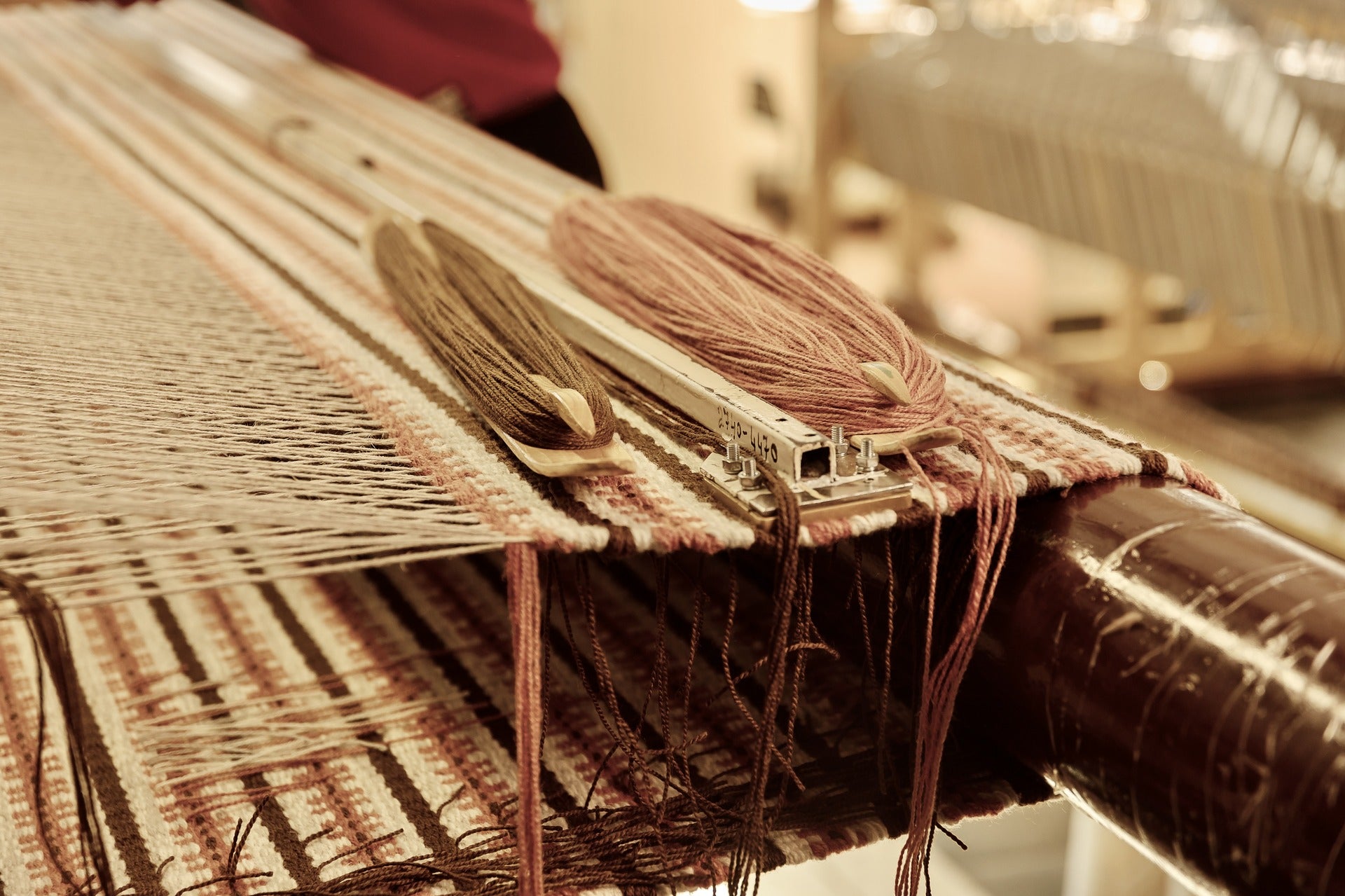
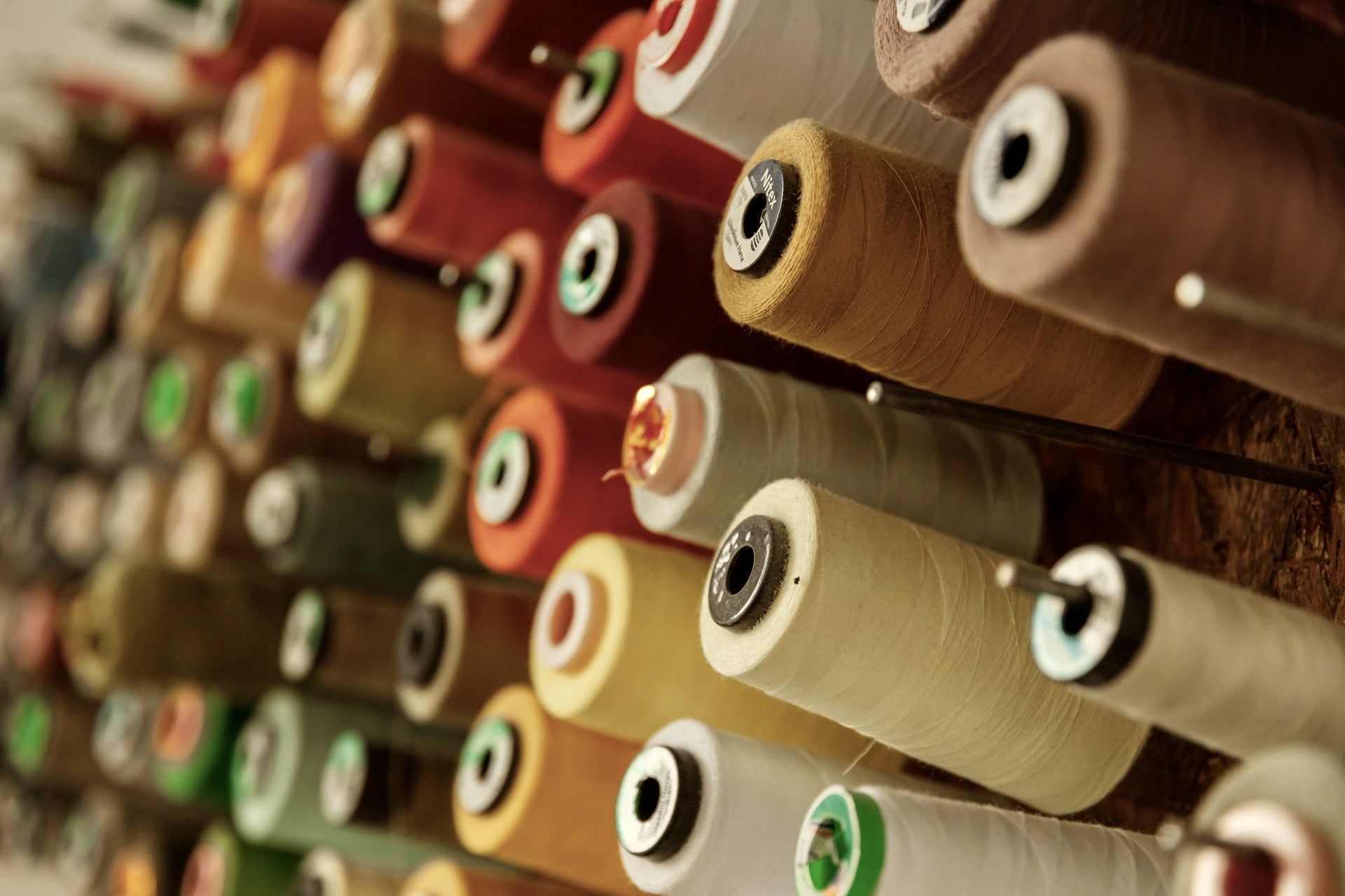
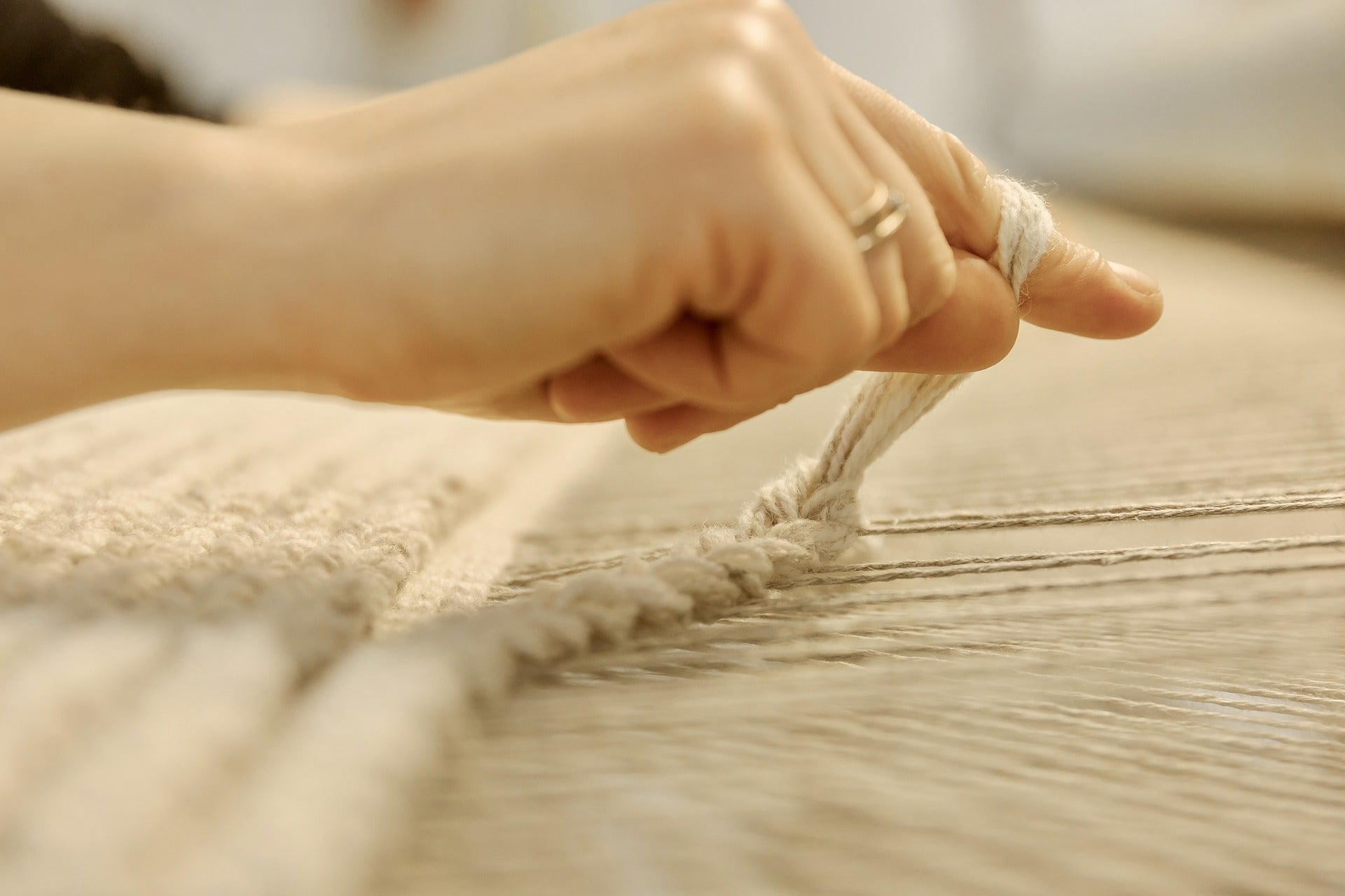
Weaving rugs is a demanding process that requires both physical effort and artistic precision. Preparing the materials involves winding and arranging yarn, while for the Cotton Collection, the fabric is dyed, cut into rags, and sewn together. These rags—or wool yarn in the Wool Collection—are then carefully placed in the loom by hand.
The widest rugs require three weavers working in unison—one on each side of the loom and one in the middle. To ease the strain on the weavers' shoulders, air pressure pistons help compress the weft. Once complete, the rug is removed from the loom and finished with hand-tied fringes, an oriental braid, or a hemmed edge for the Wool Collection.

We weave rugs in all sizes, with individual pieces limited to a maximum width of 6 metres and a length of 16 metres due to loom size. For larger spaces, we can seamlessly join rugs together, and for wall-to-wall installations or staircases, we offer a latex backing for added stability.
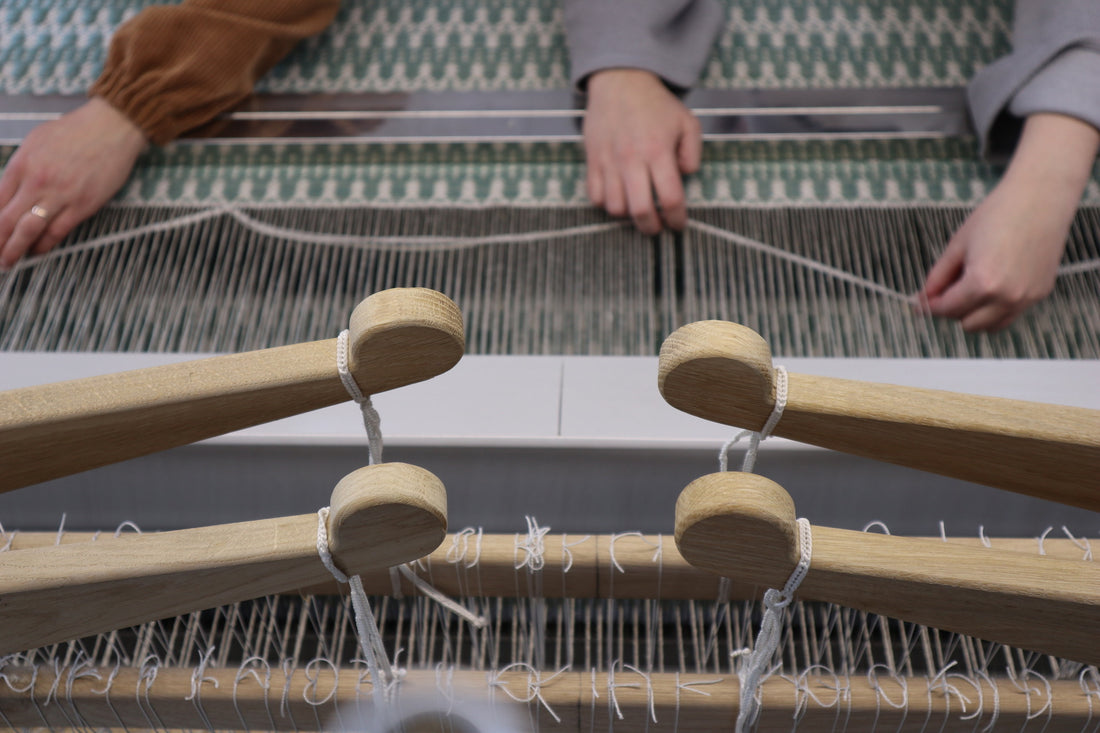
Bespoke service
Our bespoke service allows you to customise rugs to suit your specific space. Select alternative colours, materials, textures, patterns and finishes beyond our collections. With our expertise, we can guide you in creating a rug that enhances and complements the space.


